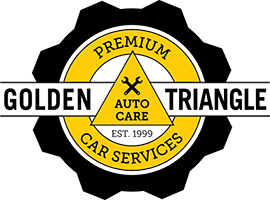
Call Us Now
303-573-1335

Just when you thought it was safe to cruise around town with a dashboard free of shiny warning lights, we bring you another, less discussed light – the ABS warning light! The first thing you need to know is, an illuminated ABS warning light does NOT mean your brakes are going to fail at the next red light.
At the same time, you don’t want to ignore this light, and prompt attention is warranted.
As you may know, your ABS is basically an ‘add-on’ feature to your overall brake system. It only comes into use during sudden panic stops or in marginal traffic conditions. On a wet road, for example, when you brake quickly and are on the verge of skidding, the ABS system kicks in to prevent the wheels from locking. The result – No skid.
That means, when your ABS warning light comes on, your MAIN braking system is still working normally…unless, of course, your main brake warning light is lit as well! However, the ABS light does mean that portion of the brake system has been deactivated because of a self-diagnosed fault, and you want to bring your car in for prompt evaluation.
There is one catch here, depending on your vehicle. In some cars, the ABS system relies on an electric pump and pressure accumulator pump, while in other vehicles it is a conventional pump booster that supports the ABS system. If your car has the former, the illumination of the ABS light MIGHT also indicate a loss of power-assist with the car’s power braking. In this situation, your car will still brake but will not have the usual power assist; that is, it will be ‘harder’ for the driver to brake the car. For those who have difficulty braking without power assist, this CAN BE an unsafe driving situation.
Okay, we have given you some of the worst case scenarios…How about a simple one!
Sometimes the cause of an illuminated ABS light is simply a problem with one of the wheel speed sensors. This typically is the case when the light comes on when the car starts moving or during ABS operation or valve cycling that occurs with normal stops on dry pavement.
Other ABS and Main Brake Light situations:
- If both the ABS and main brake lights are on and there is lack of normal power assist with braking, the pump might be inoperative on applications that have an integral ABS system. As discussed above, particularly for a driver who has difficulty without the help of power assist, evaluation is called for.
- If both lights are on but power assist is PRESENT, there may be a low brake fluid level, or one of the brake circuits may have loss of hydraulic pressure. Prompt assessment is again important.
- A lit Main Brake light – with no ABS light – that remains on, or comes on with driving, typically means there is a conventional brake problem that requires evaluation. This is likely a main brake hydraulic system problem such as a leak or loss of pressure. A prompt evaluation is in order, since these problems pose a driving safety issue.
Finally, any grabbing or pulling with braking likely has nothing to do with your ABS system. These symptoms reflect a conventional brake problem that requires timely assessment.
